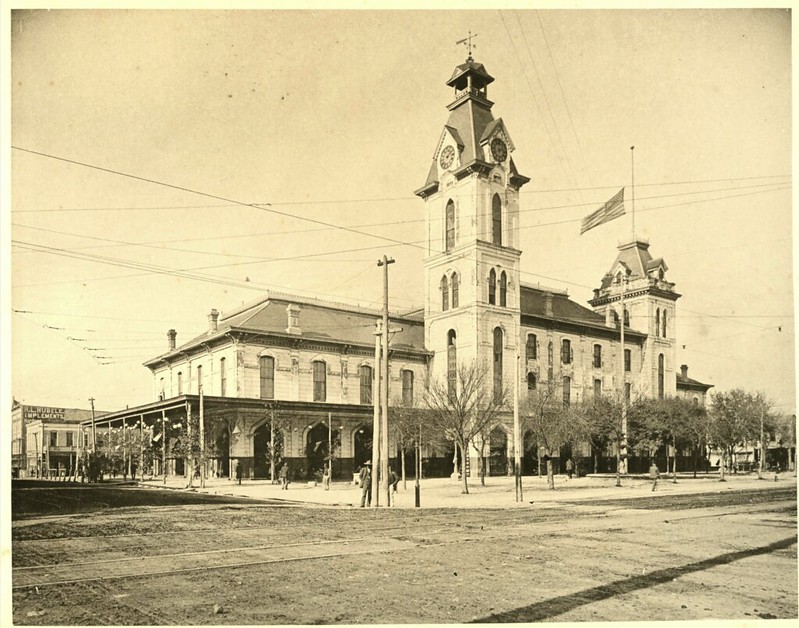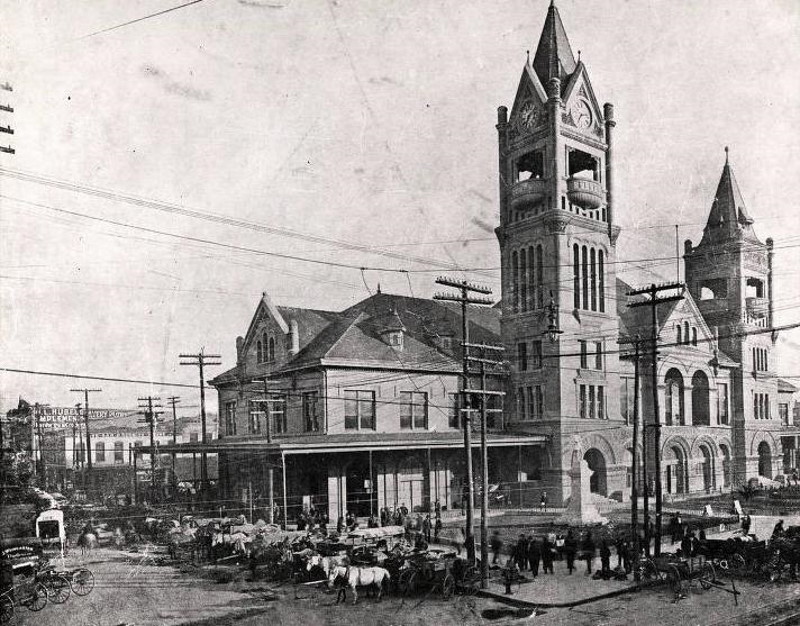Food Halls & Markets in Houston Barbecue
Not long after John and Augustus Allen founded Houston in 1836, two Frenchmen with a talent for hunting wild game arrived in the city. By 1840, the Russeau brothers had set up two covered tables at the northeast corner of what is now Market Square Park in downtown.
Not much is known of the brothers, other than they were capable hunters who took advantage of the plentiful wild game that flourished just a block away near Buffalo Bayou. They sold their game, as well as vegetables and provisions, from their tiny stand on this prominent plot in the newly formed city.
Alas, success was fleeting, as a newspaper report some years later describes how the brothers had a falling-out, and “one swindled the other and left town, and the remaining one was found dead one morning upon the square.”
Welcome to Houston.
Starting with the example set by the Allen brothers, Houston has always been known as a city of entrepreneurs and wildcatters. Especially when it comes to food, the Bayou City has incubated many different cultures and traditions, from Tex-Mex to barbecue to Vietnamese cuisine.
That tradition continues today with several new food halls opening in downtown and other areas. Starting with the Conservatory in 2016 (formerly home to El Burro & the Bull barbecue restaurant) and more recently with the opening of Bravery Chef Hall, these collections of small and upcoming restaurants act as incubators for Houston’s new generation of chefs and pitmasters.
From the beginning, Houston food markets were a public-private partnership. In 1841, the first City Hall and Market was built on what is now Market Square. The two-story structure featured City Hall offices on the second floor and food stalls rented out to local farmers and butchers on the first floor.
Not much is known of this structure, as city records were destroyed after the Civil War ended in 1865. As noted by the city treasurer back then, “During the time the Federal military guard occupied the council room in the market house, all books and papers of the city were destroyed.”
By 1871, the city decided to replace that City Hall and Market with a much larger one reflecting the grand ambitions of a fast-growing metropolis. City leaders were approached by New York financiers to build the city hall of their dreams. There was much debate about how the North was just trying to put the South in debt, but the building was eventually constructed for $470,000 — a massive expenditure at the time.
It was immediately branded a white elephant by the local press with an elaborate public theater included with the City Hall on the second floor and food stalls and restaurants on the ground floor. The slipshod original plans failed to include stairs to the second floor, which had to be added later, contributing to the exorbitant cost.
 Third City Hall & Market ca 1900
Third City Hall & Market ca 1900
Houston Metropolitan Research Center
The design placed the restaurants directly below the theater, and in 1876 a fire in one of the food stalls — an early barbecue joint, perhaps? — set aflame the scenery in the theater, and the entire structure burned to the ground.
 Fourth City Hall & Market ca 1904
Fourth City Hall & Market ca 1904
University of Houston Libraries
Fortunately, insurance proceeds paid for a new City Hall and Market in 1877, at a much more reasonable price of $100,000. But that building would eventually burn down, too, and be replaced by a new structure in 1904. That structure continued as the City Hall until 1938, when it moved to its current location on Hermann Square and continued as a food market until 1960, when the building was torn down.

